Burial at sea: Seven things you might not know
- Published
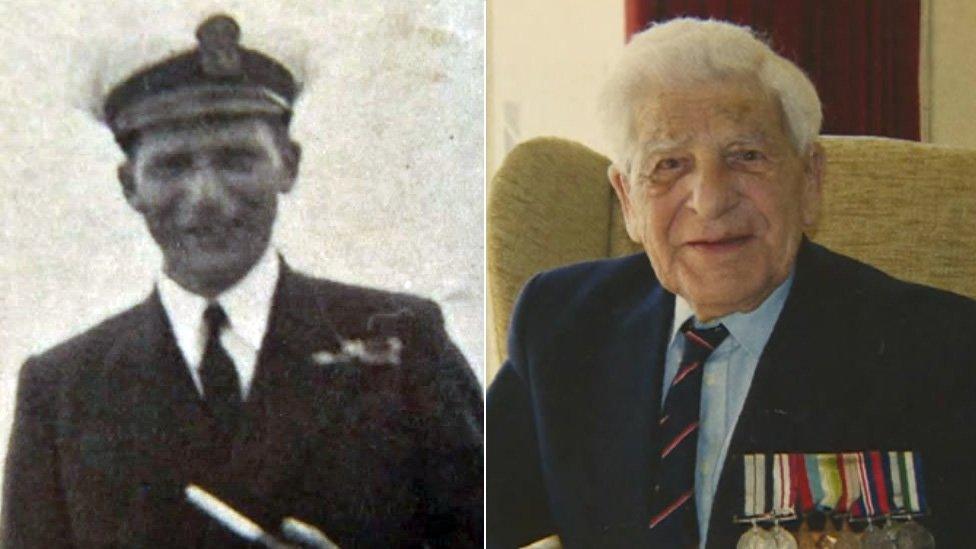
Bryan Clowes was a veteran of the Arctic Convoy
A 101-year-old Royal Navy sailor was recently laid to rest at sea. Bryan Clowes, a former Petty Officer and veteran of the Arctic Convoy, took his final voyage aboard East Sussex 1, an ex-naval Kiwi class vessel last week. But how unusual is a burial at sea?
A dozen or so people every year are buried at sea off the British Isles, according to figures by the Marine Management Organisation (MMO) service, external.
Here are a few things you might not know about it.

Anyone can be buried at sea
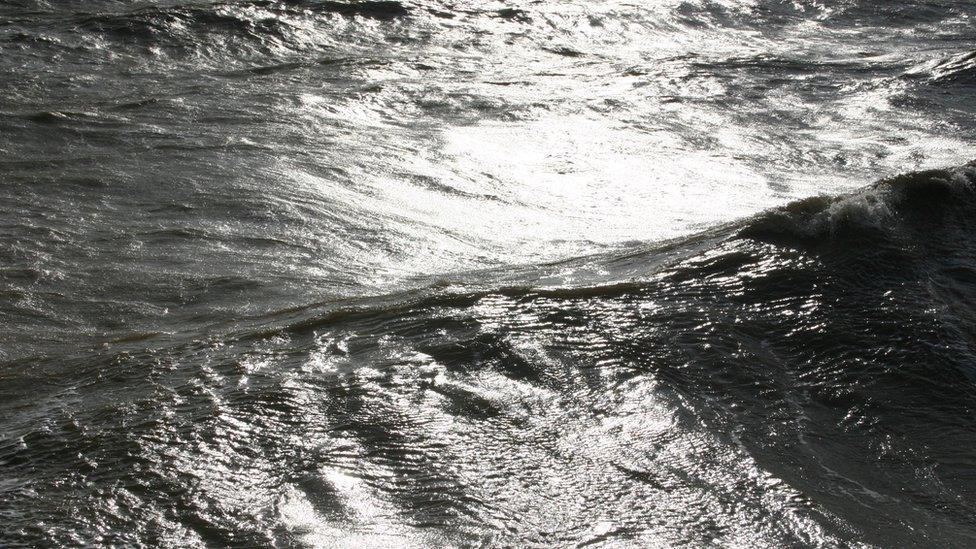
Although many people who are buried at sea are former sailors or navy personnel, there is no need to have a connection with maritime life.
Anyone can be buried at sea, so long as the person arranging it has a licence - available for £175 from the MMO - and complies with some environmental rules.
Applicants must provide a certificate from a doctor that the body is clear of fever and infection, and the coroner may also need to be informed., external
The person being buried must not be embalmed and should be clad in light, biodegradable clothing.
Some funeral directors will arrange the event, and the Britannia Shipping Company, external specialises in it. Charity organisation the Maritime Volunteer Service also helps carry out burials at sea.
The navy conducts its own burials at sea, for those veterans who wish it. For more detailed information you should contact the chaplain at the base from which the dead person served.

But you can't simply be buried anywhere
The Last Post was played when Bryan Clowes was buried at sea
There are only three designated burial sites in English coastal waters. They are at Newhaven in East Sussex, The Needles Spoil Ground near the Isle of Wight and Tynemouth, Tyne and Wear.
If you wish to bury someone in a location other than one of the three above, you can propose a new site when making your application.
You will need to supply exact co-ordinates and evidence to demonstrate that the site is suitable for burials at sea.
It must be somewhere there is a minimal risk of the body being returned to shore by strong currents or being disturbed by commercial fishing nets. In some rare cases, bodies do drift. Because of this, the person buried must have an identification tag attached to them.
It can also take about five hours to reach the burial site and be quite choppy, according to David Hughes from the Marine Volunteer Service, which handled Mr Clowes' burial.
For this reason, many families choose to have a ceremony on land, before saying goodbye from the quayside.
Mr Hughes says he utters a short prayer as the coffin is committed to the sea.

It could have become commonplace - or could it?
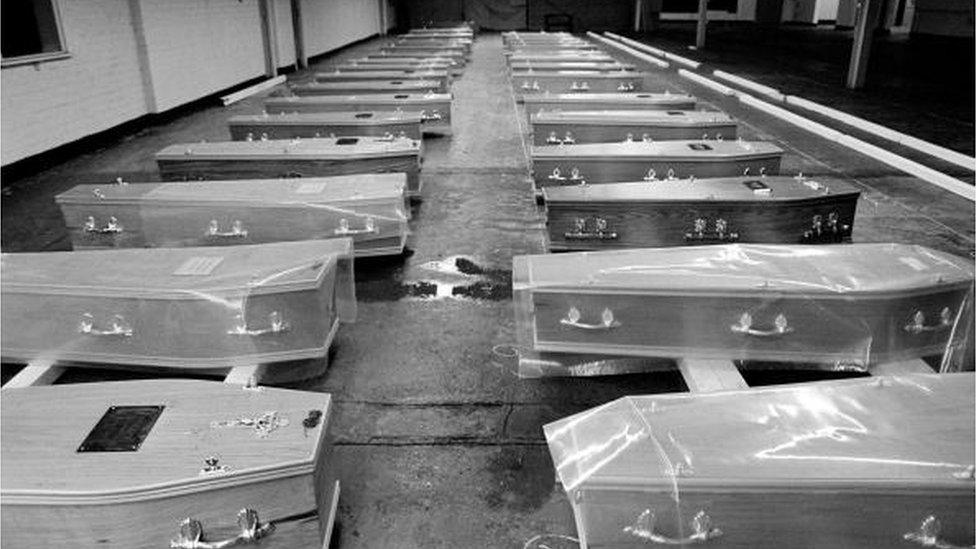
Coffins in a disused Liverpool warehouse await burial in December 1978 as gravediggers were on strike
During the Winter of Discontent, burial at sea was a method hypothetically suggested by the then medical officer of health for Liverpool, Duncan Dolton, in the case of an extended strike by the union representing gravediggers, the GMWU.
However, in an interview Dr Dolton did for a Channel 4 documentary in 1998, [Secret History: Winter of Discontent] he said a reporter had "badgered" him about what would happen if the strike wasn't resolved.
"The reporter said 'Come on. Come on. If this goes on for months what will happen?' I answer, 'If necessary, we'll have to bury them at sea.'
"Now to me, that didn't sound strange. I had been a naval officer... and I thought that this was a dignified and honourable way of disposing of the dead.
"So I was completely astonished the next morning with the headlines: 'Burial at Sea says Medical Officer.' And I have to confess, I was horrified."

A special coffin is required
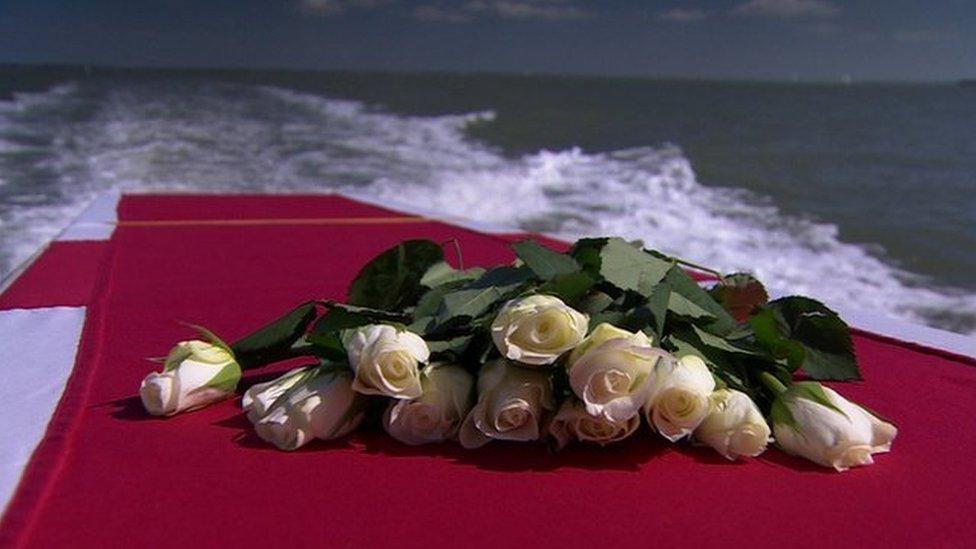
The MMO specifies the coffin must be made from solid softwood and must not contain any plastic, lead, copper or zinc. This is to make sure it biodegrades and to protect the area from contamination.
To make sure the coffin sinks quickly to the seabed and does not float around, two-inch (50mm) holes must be drilled throughout, and about 200kg (440lb) should be clamped to the base.
You can find other coffin requirements here, external.

Francis Drake wore a suit of armour to be buried

Francis Drake was buried at sea
The Elizabethan sailor and navigator died at sea in 1596 and his body, clad in a full suit of armour and in a lead coffin, is thought to be off the coast of Panama.
In October 2011, the owner of a US pirate museum clamed to be close to finding Drake's remains as he'd located two ships - the Elizabeth and the Delight - that were scuttled shortly after the explorer's death.
However, the coffin has not yet been found. Divers still search for it.

Scattering ashes is easier

Dad's Army actor John Laurie's ashes were scattered over the English Channel
Anyone can scatter ashes at sea, and you don't need a special licence or the involvement of an undertaker. Defra recommends the scattering of cremation ashes at sea, rather than burial, which alleviates the risk of bodies being washed up.
There have been discussions about making the taking of DNA samples from bodies to be buried at sea a legal requirement.
Famous people whose ashes were strewn upon the waves include Alfred Hitchcock and Janis Joplin (Pacific Ocean), Edmund Hillary (New Zealand's Hauraki Gulf), Robin Williams (San Francisco Bay) and Dad's Army actor John Laurie (English Channel).

This quote is often cited at sea burials
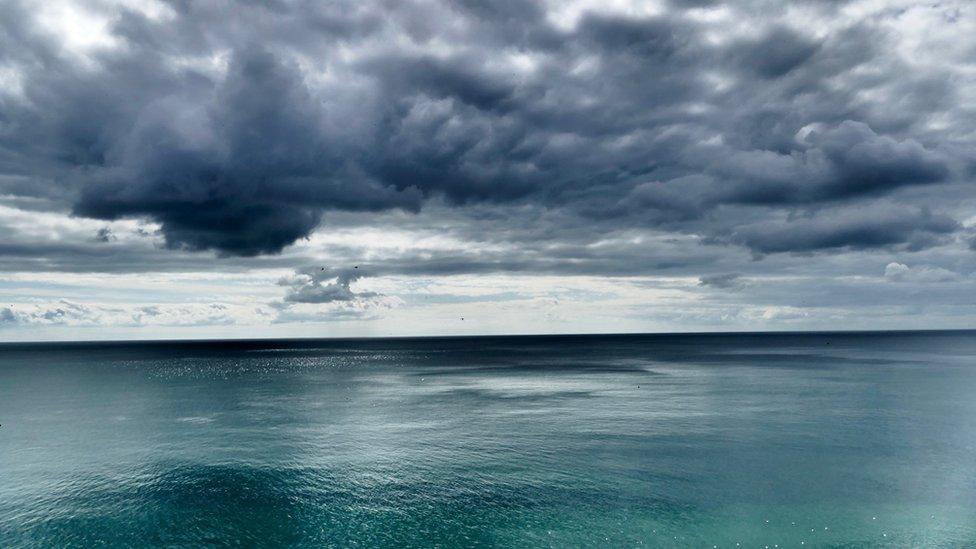
"The sea is the largest cemetery, and its slumbers sleep without a monument.
"All other graveyards show symbols of distinction between great and small, rich and poor: but in the ocean cemetery, the king, the clown, the prince and the peasant are alike, undistinguishable."
George Bruce, 1884, St Andrews